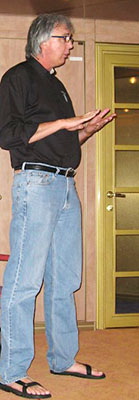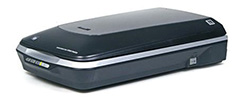
"Workflow" is the kind of word that makes most hobbyist photographers cringe. But the fact of the matter is, if you've taken great photos with your digital camera, don't you want to find the easiest way to organize them and share with others?
If this sounds appealing to you, then you might be interested in my workshop this coming weekend titled, I've Taken Great Photos, Now What?. You'll learn about the coolest photo management applications including Adobe Lightroom, Apple iPhoto, Photoshop CS3, Photoshop Elements 6, and Apple Aperture. We'll build a workflow tailored specifically for your needs. And by the end of the day, you'll see that managing your images can be as fun as taking them in the first place.
The workshop begins at 10 am on Sat. December 1 at 1678 Emeritus Hall, Santa Rosa Junior College in Santa Rosa, California. You can sign up for the class online, or call for more information at 707-527-4372. The course fee is $63.
Photo of Derrick Story teaching on a recent Geek Cruise taken by Randal Schwartz.
Events! See the TDS Event Calendar for photography workshops, speaking engagements, and trade show appearances.
Technorati Tags: Aperture, digital photography, iPhoto, software, The Digital Story, Workshop
























